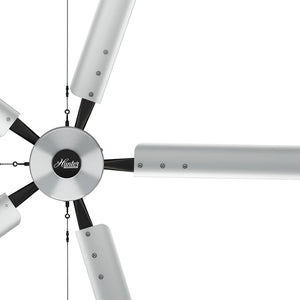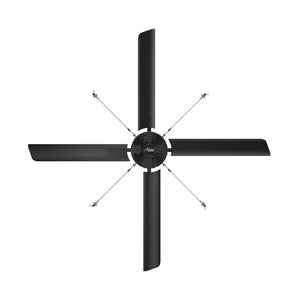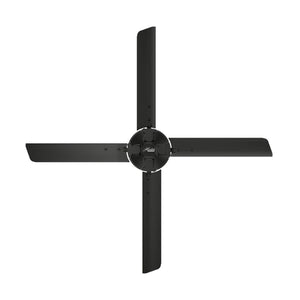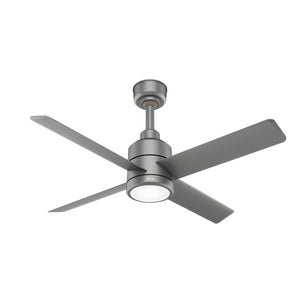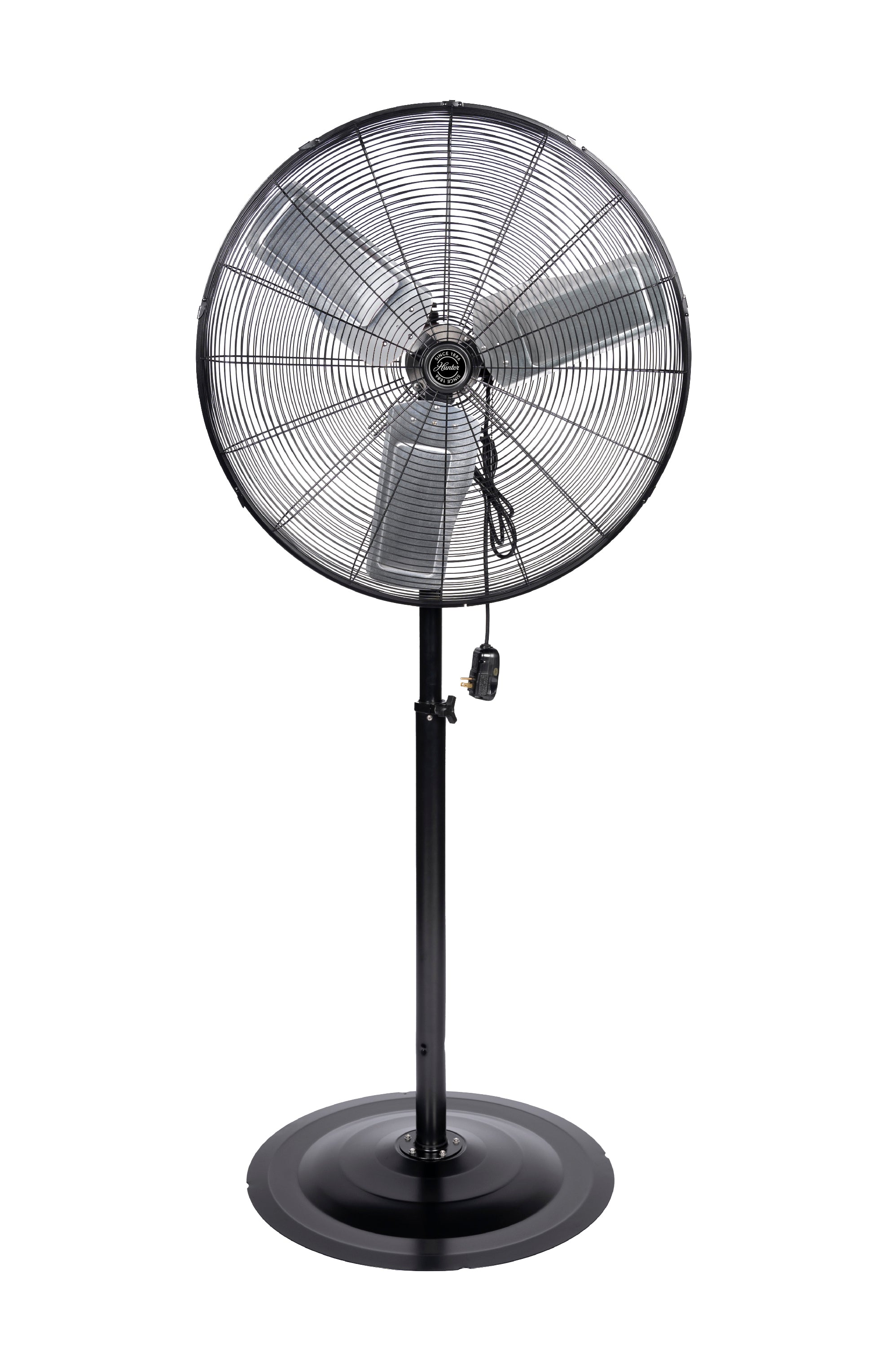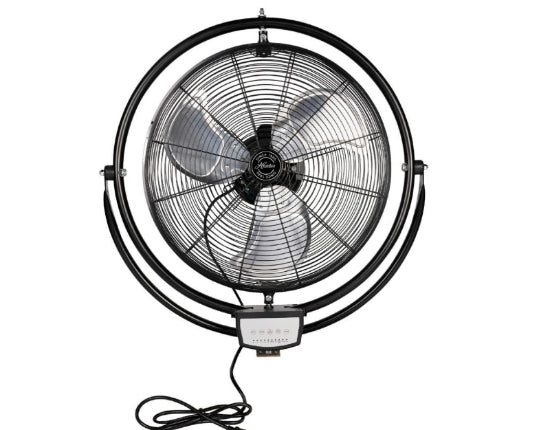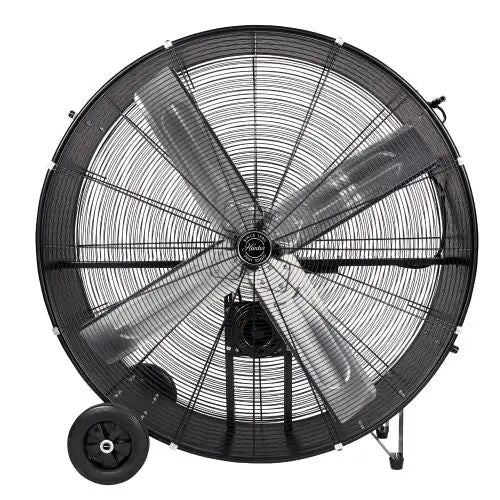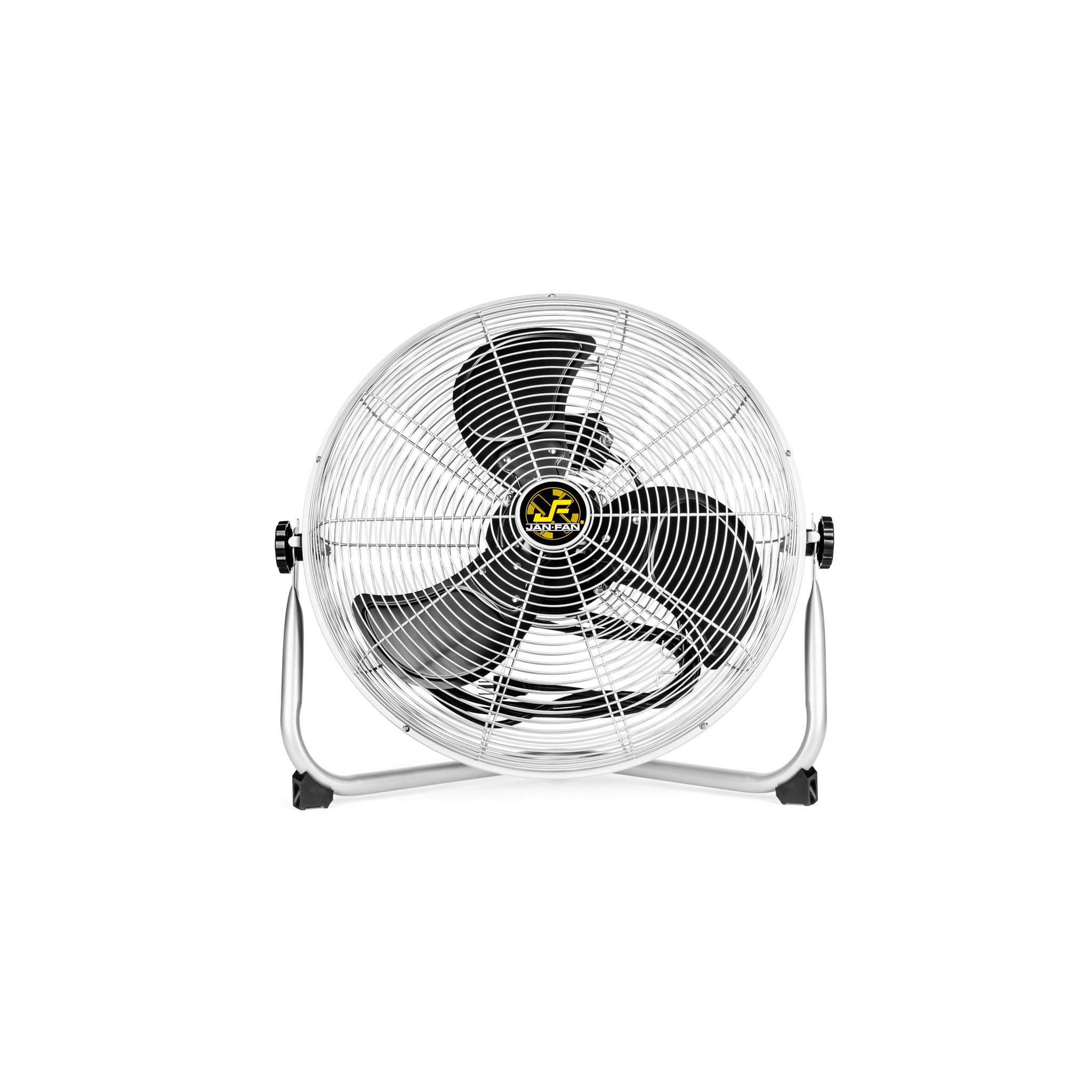Guide to Cooling a Warehouse in the Summer

TABLE OF CONTENTS
Why Traditional AC Doesn't Work
If you've ever tried to figure out how to cool a warehouse in the summer, you already know that it's no easy task. These buildings are massive, often poorly insulated, and packed with heat-generating activity. Between the high ceilings, constant loading dock traffic, and metal roofing that soaks up the sun, it's no wonder temperatures inside can feel hotter than outside. Even newer warehouses built for efficiency can turn into ovens by midday—especially in regions where summer heat sticks around for months.
Unlike office spaces or retail buildings, most warehouses just aren't designed to trap cool air. Bay doors stay open all day, letting heat and humidity roll right in. Air gets trapped near the ceiling, while workers sweat it out below. And without smart airflow management, stagnant zones can build up fast—impacting comfort, productivity, and even equipment performance.
EXPLORE OTHER CATEGORIES
Warehouse Cooling Solutions & How To Use Them
Creating a comfortable, efficient warehouse environment requires a mix of air movement and strategic temperature management. The right solution depends on your layout, climate, and the kind of work being done in each zone. Below are some of the most effective ways facilities improve air circulation and comfort throughout their space.

1. HVLS Fans (Best Overall for Cooling Warehouse Space)
High-volume, low-speed (HVLS) fans are the go-to solution for many industrial spaces—and for good reason. These large-diameter ceiling fans move massive volumes of air slowly and efficiently, creating a perceived cooling effect that can make it feel 10°F cooler.
| Pros | Ideal Use Considerations |
|---|---|
| Covers large areas with minimal energy use | Requires overhead clearance and proper mounting |
| Improves comfort and airflow across entire floor | Performs best in open layouts with room for large blade movement |
| Works year-round (summer cooling effect + winter destratification) | Initial investment is higher because it's designed for long-term, facility-wide improvement |
Best use cases: Packaging zones, production floors, staging areas, and open warehouse interiors.
2. Wall-Mount Fans (Great for Directed Airflow)
When you need airflow in a specific zone–for example, along a conveyor belt or over a workstation— wall-mounted industrial fans for warehouses are a solid bet. They're space-saving and can be angled exactly where you need them.
| Pros | Ideal Use Considerations |
|---|---|
| Directs airflow exactly where needed | Designed for targeted airflow rather than whole-facility cooling |
| Saves floor space | Sound level depends on motor size and mounting location |
| Great for workstations, high-traffic aisles, quality-control areas |
Best use cases: Assembly lines, break areas, quality control stations.
3. Portable Barrel Fans (Flexible & Mobile)
Barrel fans (also known as drum fans) are ideal for short-term or rotating needs. They're powerful, mobile, and can be rolled wherever airflow is needed most.
| Pros | Ideal Use Considerations |
|---|---|
| Moveable and flexible | Takes up floor space in busy areas |
| No installation required | Best for spot cooling, not warehouse-wide airflow |
| Great for events, temporary cooling, and rotating zones |
Best use cases: Temporary cooling, events, spot cooling in rotating zones.
4. Natural Ventilation (Supplemental)
If your facility has ridge vents, louvers, or operable skylights, natural airflow can help, but only to a point.
| Pros | Ideal Use Considerations |
|---|---|
| Zero energy cost | Limited by weather and climate |
| No equipment needed | Provides minimal relief in still, hot conditions |
Best use cases: Mild climates, early mornings/evenings, backup to mechanical ventilation.
5. Misting Systems (Limited Use in Semi-Outdoor Areas)
While misting systems aren't ideal for indoor warehouse spaces, they can provide relief in semi-outdoor zones like loading docks or exterior staging areas—especially in hot, dry climates. In these settings, misting helps to improve worker comfort.
| Pros | Ideal Use Considerations |
|---|---|
| Immediate cooling effect in outdoor/semi-outdoor areas | Not intended for enclosed warehouse interiors |
| Works well in hot, dry climates | Adds moisture that may not suit all environments |
Best use cases: Loading docks, outdoor staging areas, or exterior break zones in dry environments.

How HVLS Fans Work To Lower Perceived Temperature
The true strength of a High-Volume, Low-Speed (HVLS) fan lies not just in how much air it moves, but in how effectively it enhances comfort through efficient airflow. By circulating large volumes of air at low speeds, these oversized ceiling fans create a gentle, consistent breeze across wide floor areas—delivering a perceived cooling effect of up to 10 degrees.
HVLS fans also address a common challenge in warehouse environments: thermal stratification. Hot air naturally rises and collects near the ceiling, creating uneven temperature zones. HVLS systems disrupt this layering effect, pushing warm air back down during cooler months and keeping air evenly mixed during the summer. This process, known as thermal destratification, contributes to more consistent comfort and reduced reliance on traditional HVAC systems.
Real-World Results: What to Expect
What kind of impact can you realistically expect from implementing HVLS fans or other warehouse cooling solutions? While results vary by facility size and layout, most warehouse managers report a noticeable improvement in both temperature perception and workforce morale.
- Perceived Temperature Drop: HVLS fans can create a perceived cooling effect of up to 10 degrees, thanks to massive air movement and improved airflow coverage. In spaces without air conditioning, that difference can be the line between uncomfortable and comfortable working conditions. Many facilities use HVLS fans year-round to improve air circulation and overall air quality.
- Energy Savings: Facilities using HVLS fans alongside HVAC systems can potentially reduce energy consumption, thanks to more efficient temperature regulation. And for those without AC? HVLS fans offer a low-cost, high-impact alternative.
- Worker Comfort & Retention: A comfortable environment boosts morale and helps reduce turnover. Employees are more focused and productive all season long.
The bottom line: whether you're trying to cut utility costs or keep your teams safe and satisfied, industrial fans for warehouses deliver real, measurable value.
Where to Place Fans for Maximum Coverage
Strategic placement is key to maximizing the effectiveness of any warehouse cooling solution. Whether you're installing HVLS ceiling fans, wall-mounted units, or portable circulators, the goal is to target high-traffic areas and eliminate stagnant air pockets. Here's where industrial fans tend to deliver the biggest payoff:
Loading Docks
These are some of the hottest spots in the building. With bay doors constantly open, heat and humidity flow freely inside. Position HVLS or wall-mounted fans to push airflow across dock doors and staging areas.
Picking and Packing Lines
Workers on production or packing lines often spend hours in one place. Overhead or wall-mounted industrial fans for warehouses keep air moving in these zones, improving comfort without disrupting workflow.
Break Areas and Locker Rooms
Employee wellness matters, and giving staff a place to cool off makes a difference. Portable fans or smaller HVLS models can be ideal in these spaces.
Cross-Ventilation Points
If your facility has any natural airflow paths (open bays across from each other, vented roof lines, etc.), you can enhance that with fan-powered cross-ventilation. Placing fans at opposing points encourages full building air turnover and helps reduce warehouse temperature more evenly.
Pro Tip: Proper layout planning ensures every zone benefits, not just the open floor space. If you're unsure where to start, Hunter Industrial offers site assessments to map out optimal fan size and placement.
Final Takeaways: Smarter Warehouse Cooling Starts With HVLS Fans
If you're looking for practical, budget-friendly ways to beat the summer heat, figuring out how to cool a warehouse efficiently should start with your airflow strategy. Traditional HVAC systems benefit from an assist from HVLS fans, which deliver powerful, energy-efficient air movement across your entire facility. This helps to mitigate uncomfortable warehouse temperatures, improve comfort, and support year-round savings. Among all warehouse cooling solutions, HVLS systems offer the strongest return on investment, both in energy performance and employee satisfaction.
Whether you're managing a single distribution center or a multi-facility operation, upgrading your air circulation is one of the smartest decisions you can make. Want to see how comfortable your space could be?
Get Started Today
Ready to transform your warehouse cooling strategy?
What is the ideal temperature for a warehouse?
According to OSHA guidelines, the ideal workplace temperature range is between 68-78°F. When temperatures rise above 78°F, strenuous warehouse work can become unsafe. However, with proper airflow management using HVLS fans, workers can remain comfortable even when actual temperatures exceed this range, as the perceived temperature can feel up to 10 degrees cooler.
Can HVLS fans cool a warehouse without AC?
Yes, HVLS fans can significantly improve comfort in warehouses without air conditioning. While they don't lower the actual temperature, they create a perceived cooling effect of up to 10°F through efficient air circulation. This makes the environment feel much cooler and more comfortable for workers, offering a cost-effective alternative to traditional AC systems.
How much can HVLS fans reduce energy costs?
HVLS fans cost just pennies per hour to operate and can help reduce overall energy consumption when used alongside HVAC systems. By improving air circulation and preventing thermal stratification, they allow HVAC systems to work more efficiently, potentially reducing cooling costs while maintaining comfortable conditions throughout the facility.
Where should HVLS fans be placed in a warehouse?
HVLS fans should be strategically placed in high-traffic areas like loading docks, picking and packing lines, and open warehouse floors. The goal is to eliminate stagnant air pockets and provide coverage where workers spend the most time. Hunter Industrial offers site assessments to help determine optimal fan placement based on your specific facility layout.
Do HVLS fans work in winter?
Yes, HVLS fans provide year-round benefits. In winter, they can be reversed to operate in destratification mode, pushing warm air that naturally rises to the ceiling back down to floor level. This helps maintain consistent temperatures throughout the warehouse and can reduce heating costs by making better use of the warm air already in your space.

 100% Secure Payments
100% Secure Payments